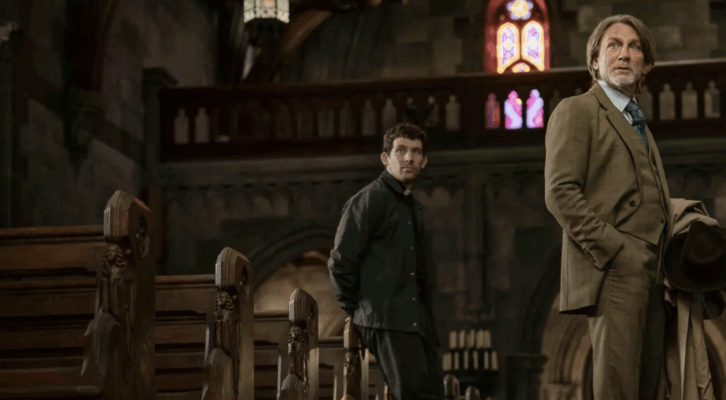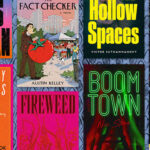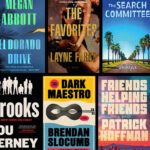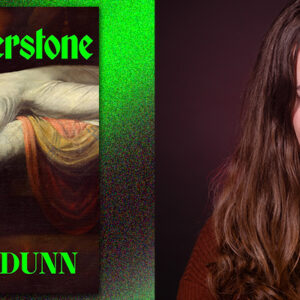Horror royalty Osgood Perkins was on board to adapt Stephen King’s short story “The Monkey” before his 2024 serial killer thriller “Longlegs” became a runaway hit, but that can’t have exactly lowered the stakes. King’s short stories have been adapted to film going back almost as far as his novels and, indeed, “The Monkey” itself was adapted in everything but name as a segment of the cheapie 1996 Mystery Science Theater 3000 target “Merlin’s Shop of Mystical Wonders.”
But I’m waiting for it with particularly bated breath because the original story is one of King’s most effective, a dread-infused aperitif that works precisely because it’s too short to run on anything but no-time-to-explain nightmare logic. Stretching a story to movie length can sap it of this quality–witness another King adaptation, 2023’s “The Boogeyman,” which turns a what-the-fuck gut punch ending into yet another ghost or monster that, get this, is a metaphor for grief.
Perkins, of course, has more than earned the benefit of the doubt, and an effective adaptation of “The Monkey” is entirely possible, even likely if early reviews are any indication. And if Perkins pulls it off, here are five other great horror short stories that could get the same treatment, and how to stick the landing.
“The Terrible Old Man” by H.P. Lovecraft
The premise: In one of Lovecraft’s shortest and punchiest stories, three burglars (all specified to be immigrants, so it’s not THAT atypical of Lovecraft) plot to rob the seaside home of the hermit of the title, and get much more than they bargained for.
How to do it right: The pitch is essentially “Home Alone as horror,” and something similar was done very effectively and entertainingly in last year’s “Abigail.” There’s a tendency to add Lovecraft’s sprawling cosmic lore to adaptations and homages, but that would be a mistake here–to preserve the story’s power, it has to preserve the sensation that nothing exists outside the house. It could work as either a period piece or contemporary, especially since the titular man is implied to be centuries old.
“The Whimper of Whipped Dogs” by Harlan Ellison
The premise: In 1970s New York, a woman witnesses a horrific crime clearly inspired by the murder of Kitty Genovese (or rather the popular myth around it) and descends into paranoia and anxiety about her surroundings, only to seemingly discover a deeper and more disturbing truth behind urban alienation and decay.
How to do it right: Despite its brevity, Ellison’s story has a lot in common with another horror masterpiece of the era, Roman Polanski’s adaptation of “Rosemary’s Baby,” purely by how adeptly it captures the feeling of something sinister going on in your peripheral vision within the big, anonymizing city, and the difficulty of investigating further without making yourself feel insane. Also like that classic movie, Ellison perfectly dramatizes the keys-in-the-fist paranoia that specifically keeps a modern woman alive (even if, like Polanski, Ellison’s hands aren’t exactly clean on that front). Despite its ties to the 60s and 70s, that vibe makes it timeless.
“The Rider” by Tananarive Due
The premise: In 1961, sisters Patricia and Priscilla are en route from Tallahassee to rendezvous with the Freedom Riders in Alabama, but on the Greyhound carrying them through the Florida hinterlands, things take a turn for the terrifying, even by the standards of the Jim Crow South.
How to do it right: “Lovecraft Country” and Jordan Peele’s “Get Out” have shown how well it can work to explore America’s ugly racial history, and present, through the horror genre–indeed, Due’s story was published in the Peele-branded anthology “Out There Screaming.” And a short story exploring similar themes became one of the best story-to-horror-movie adaptations, with 1992’s “Candyman.” Due, meanwhile, is one of our finest current horror writers and writers period, and is itching for a film adaptation that does her justice, and meanwhile, the recent A24 hit “Heretic” showed just how to ratchet up the dread for a full movie with a minimalist cast and setting.
“The Summer People” by Shirley Jackson
The premise: It might be heresy but my favorite Shirley Jackson story about horror lurking beneath the veneer of the American small town isn’t “The Lottery,” it’s this 1950 story about an elderly couple that decides to stay in their beloved summer cottage after Labor Day for the first time, despite the townies’ increasingly aggressive suggestions otherwise.
How to do it right: This is another one that would live or die according to how well it resists the urge to over-explain. Unlike “The Lottery,” the power of “The Summer People” is that it never reveals exactly what its protagonists are in for, only that something is wrong, and it’s getting more and more wrong. It would take a deft hand to sustain that kind of dreadful uncertainty for the length of a movie, but I’m confident it can be done.
“The Nesting Place” by Emily Carroll
The premise: After her mother dies, Bell spends her boarding school holiday in the country with her older brother and his fiancee Rebecca, a beautiful, charming woman who’s eager to make friends. But Bell can’t shake the feeling that there’s something wrong about Rebecca, particularly when she sees a mysterious figure walking into the woods surrounding the house at night.
How to do it right: Canadian author Emily Carroll is the brain behind some of the scariest, most effective modern horror comics out there, many of them, like this one, collected in her book Through the Woods. This is the longest, and while many of her stories heavily rely on eerie unknowns and question marks, “The Nesting Place” also features some incredibly nightmarish body-horror imagery right when that’s enjoying a comeback thanks to “The Substance.” Carroll’s comic “Some Other Animal’s Meat” was previously adapted as an episode of the Netflix anthology series “Guillermo del Toro’s Cabinet of Curiosities,” so in the right hands a film adaptation is definitely achievable.

















